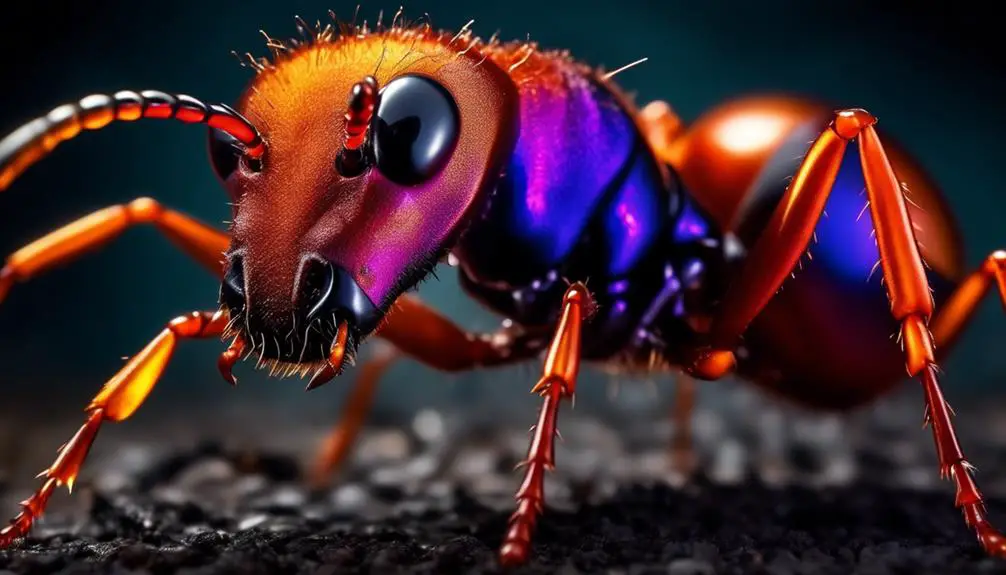Prepare yourself for a perilous plunge into the treacherous territory of venomous insects. Brace for a bone-chilling journey as we unravel the secrets of these creepy crawlies that will leave you awestruck.
From the deadly sting of the Oriental Wasp to the toxic allure of the Monarch Butterfly, we will introduce you to a world where danger lurks in every corner. Uncover the blistering power of the Blister Beetle and the aggressive nature of the Harvester Ant. But that’s just the beginning.
There are more spine-tingling creatures waiting to be unveiled, like the formidable Yellowjacket, the assassin caterpillar, and the infamous Black Widow Spider. Curiosity piqued? Then join us as we embark on an exploration of the most venomous insects in the world, where danger and fascination collide.
Blister Beetle
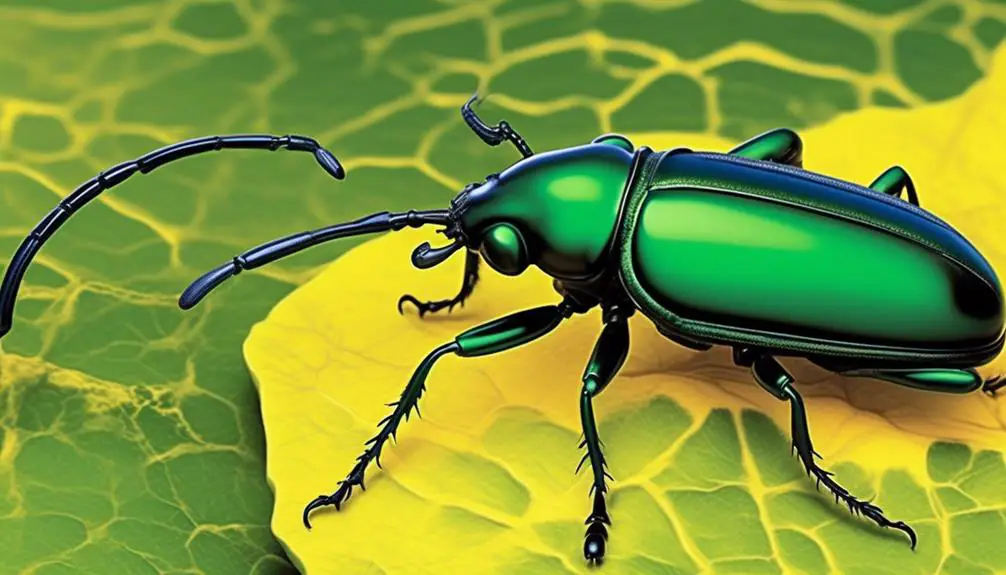
Blister beetles, with their characteristic warning stripes and the secretion of cantharidin, a potent chemical that can cause painful boils and blisters on the skin, pose a significant threat to humans and farm animals alike. These beetles belong to the family Meloidae and are found in various parts of the world. Cantharidin, the toxic compound produced by blister beetles, acts as a defense mechanism against predators.
When the beetle is disturbed or crushed, it releases cantharidin, which can cause severe irritation and blistering on the skin upon contact. Ingesting cantharidin can be even more dangerous, as it can lead to the destruction of the gastrointestinal lining, resulting in abdominal pain, vomiting, and even death.
Farm animals, such as horses, are particularly vulnerable to blister beetle toxicity. Accidental ingestion of cantharidin-contaminated feed can have devastating consequences. Symptoms in affected animals include colic, excessive salivation, and gastrointestinal distress. It’s crucial for farmers and animal owners to be aware of the presence of blister beetles in hay or other feed sources to prevent accidental ingestion.
Oriental Wasp/Murder Hornet
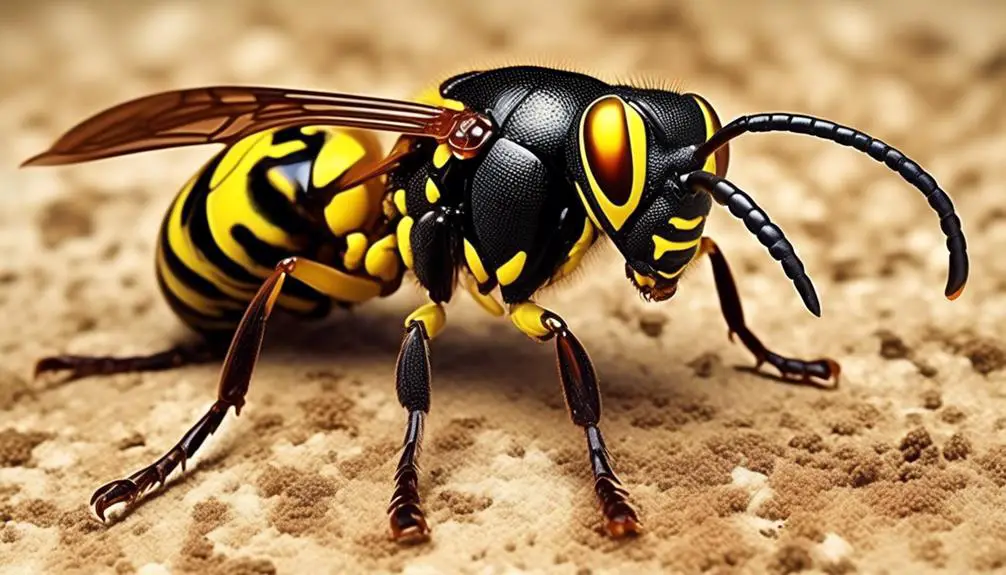
Now it’s time to explore the Oriental Wasp, also known as the Murder Hornet. This species of wasp belongs to the Hymenoptera order and is known for its severe sting. If you happen to be allergic to hymenopteran stings, you’re at the highest risk.
Not only can a sting from a murder hornet cause anaphylactic shock, inflammation, and cardiac arrest, but these aggressive insects can also swarm and deliver hundreds of stings in a matter of minutes.
Sting Severity and Symptoms
The sting severity and symptoms caused by Oriental Wasps, also known as Murder Hornets, can be highly concerning due to their aggressive nature and potent venom.
When a murder hornet stings, it injects a large amount of venom into the victim’s body. The venom contains a potent neurotoxin called mandaratoxin, which can cause severe pain and inflammation at the sting site. Some individuals may experience anaphylactic shock, a severe allergic reaction that can lead to difficulty breathing, cardiac arrest, and even death.
The sting can also result in swelling, redness, and itching. It’s important to seek immediate medical attention if stung by a murder hornet, especially for those who are allergic to hymenopteran stings.
High Risk Factors
After understanding the severity and symptoms caused by the sting of Oriental Wasps, also known as Murder Hornets, it’s crucial to delve into the high risk factors associated with encounters with these aggressive and venomous insects.
One of the primary risk factors is being allergic to hymenopteran stings, as individuals with allergies are at the highest risk of experiencing severe reactions. A sting from a Murder Hornet can result in anaphylactic shock, inflammation, cardiac arrest, and even death.
Additionally, Murder Hornets are highly aggressive and can swarm, delivering hundreds of stings in a matter of minutes. It’s essential to exercise caution and seek immediate medical attention if stung by a Murder Hornet to mitigate the potentially life-threatening consequences.
Aggressive Swarming Behavior
When encountering an Oriental Wasp or Murder Hornet, their aggressive swarming behavior can quickly escalate, resulting in the delivery of hundreds of stings in a matter of minutes. These dangerous insects are known for their highly organized attacks, where they mobilize a large group to overwhelm their prey or perceived threat. To understand the severity of their swarming behavior, let’s compare the Oriental Wasp/Murder Hornet to other venomous insects:
| Insect | Aggressive Swarming Behavior |
|---|---|
| Oriental Wasp/Murder Hornet | Yes, delivers hundreds of stings in minutes |
| Harvester Ants | Yes, known to chase and attack |
| Yellowjacket | No, inhabit isolated areas, live in nests |
| Cow Killer | No, release alarm pheromone for colony mobilization |
| Assassin Caterpillar | No, not known for swarming behavior |
As shown in the table, the Oriental Wasp/Murder Hornet stands out with its aggressive swarming behavior, making it one of the most formidable and dangerous insects in the world.
The Monarch Butterfly
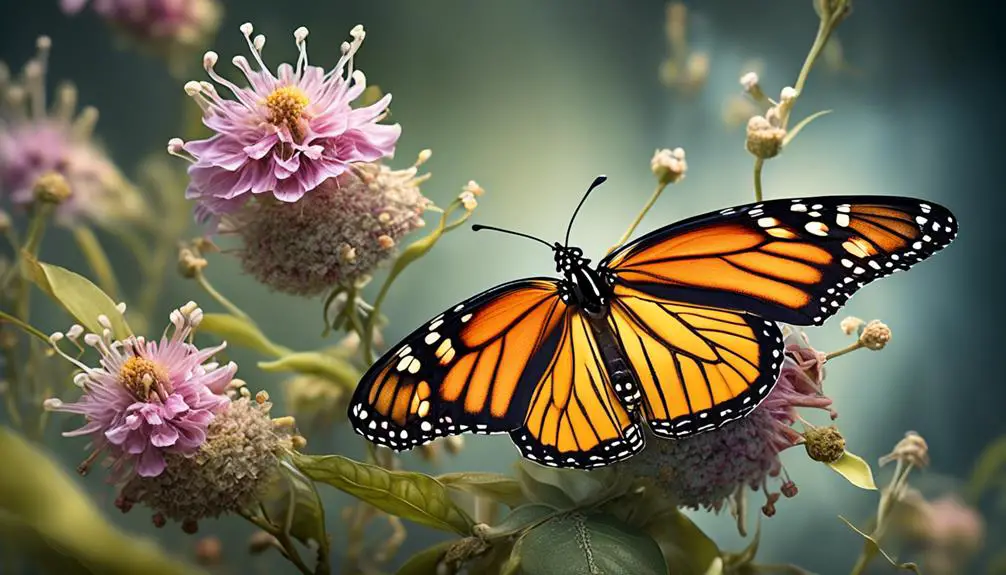
The Monarch Butterfly, scientifically known as Danaus plexippus, possesses a toxic diet that makes it one of the most poisonous creatures in the world.
The monarch caterpillar exclusively feeds on milkweed, a plant that contains potent toxins called cardiac glycosides.
Ingesting any part of the monarch, from caterpillar to butterfly, can lead to cardiac arrest in humans, making it a formidable threat.
Additionally, the monarch’s toxic diet serves as a defense mechanism, rendering them inedible to predators and posing a risk of poisoning to animals such as dogs and cats.
Toxic Diet and Defenses
The Monarch butterfly’s toxic diet of milkweed makes it one of the most poisonous creatures in the animal kingdom.
The monarch caterpillar feeds exclusively on milkweed plants, which contain toxic compounds called cardiac glycosides. These compounds are stored in the caterpillar’s body and remain present even after it metamorphoses into a butterfly.
Ingesting the monarch caterpillar, butterfly, or larvae can cause cardiac arrest in humans. Even dogs and cats are at risk of being poisoned if they consume monarch butterflies.
The toxic diet of the monarch butterfly serves as a defense mechanism against predators. The cardiac glycosides make the monarch inedible and unpalatable, deterring predators from attacking or consuming them.
Dangers to Humans
Ingesting the monarch caterpillar, butterfly, or larvae can have potentially fatal consequences for humans. The monarch butterfly is one of the most poisonous creatures due to its toxic diet of milkweed. This toxicity makes monarch butterflies inedible to predators and puts dogs and cats at risk if they consume them. Humans are not exempt from the dangers posed by monarch butterflies either. The cardiac arrest that can result from ingesting these creatures is a serious threat. To emphasize the danger, let’s take a look at the following table:
| Dangers to Humans | |
|---|---|
| Ingesting Monarch Caterpillar, Butterfly, or Larvae | Potentially Fatal Consequences |
| Toxic Diet of Milkweed | Cardiac Arrest |
| Risk to Pets | Poisoning |
| Inedible to Predators | Self-Defense Mechanism |
The table above highlights the lethal consequences of consuming monarch butterflies and emphasizes the need to avoid contact with these toxic creatures.
Impact on Predators
Consuming monarch butterflies not only poses a potentially fatal threat to humans but also has a significant impact on their predators.
Due to the toxic nature of their diet, monarch butterflies are inedible to many predators. The milkweed plant, which is the primary food source for monarch caterpillars, contains toxic compounds called cardiac glycosides. These compounds make the caterpillars, butterflies, and larvae of monarch butterflies highly poisonous.
When predators attempt to consume a monarch butterfly, they’re met with a bitter taste and experience severe vomiting and nausea. This adverse reaction acts as a deterrent, teaching predators to avoid monarch butterflies in the future.
As a result, monarch butterflies have developed a successful defense mechanism against predation, allowing them to thrive in their habitats.
Harvester Ants
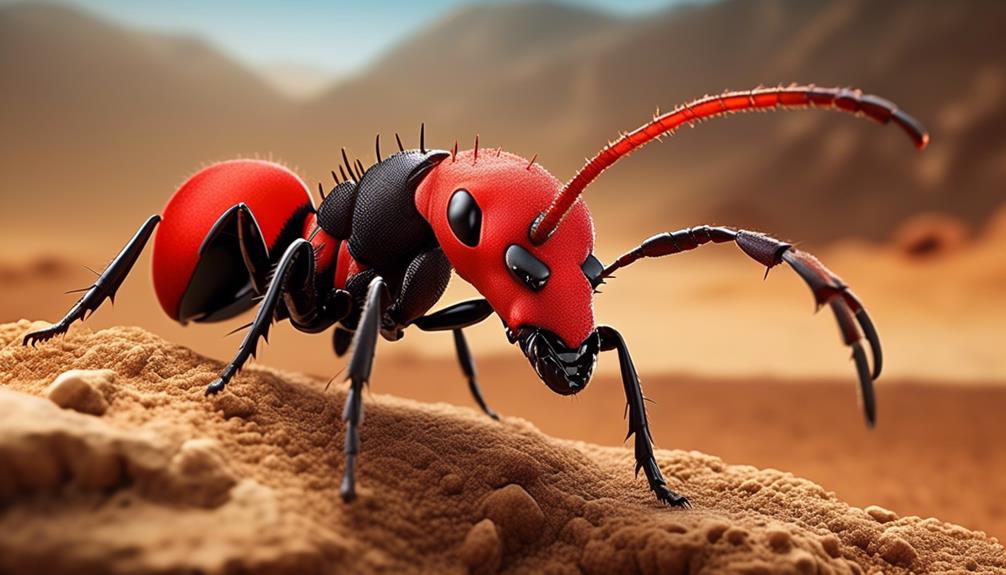
With their aggressive nature and potent venom, harvester ants rank among the most venomous insects worldwide. These ants, belonging to the genus Pogonomyrmex, are highly territorial and known to chase humans when disturbed. They’re commonly found in arid regions and are notorious for their aggressive behavior.
When a harvester ant colony is disturbed, the ants quickly swarm and attack, injecting their venom through their stingers. While a few stings from these ants can be fatal to small rodents, a swarm of harvester ants can cause painful boils and severe swelling in humans. Their venom contains a mixture of toxic peptides and enzymes that can lead to tissue damage and intense pain.
Harvester ants pose a considerable threat to agriculture as well, as they can destroy crops and disrupt ecosystems. It’s important to exercise caution and avoid disturbing harvester ant colonies to prevent painful encounters with these venomous insects.
Yellowjacket
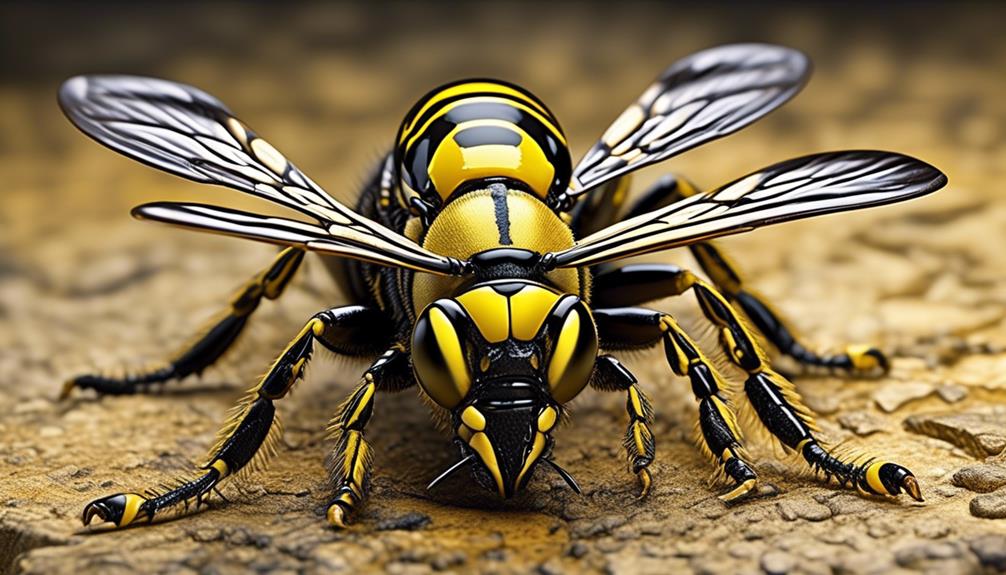
Harvester ants, known for their aggressive nature and potent venom, aren’t the only venomous insects that pose a threat to humans and agriculture. Another insect that you should be aware of is the yellowjacket.
Yellowjackets are thin wasps with distinctive black and yellow coloring. Unlike bees, they can sting multiple times. When a yellowjacket stings you, it causes a sudden, burning pain and fatigue. In some individuals, the sting can lead to severe inflammation or anaphylaxis, which can be life-threatening.
Yellowjackets inhabit isolated areas and live in nests. These nests can be found in various locations such as underground, in trees, or even in man-made structures. If you accidentally disturb a yellowjacket nest, they can become highly aggressive and swarm in defense. This means that you could potentially be stung by multiple yellowjackets in a short period of time, increasing the risk of severe symptoms.
It is important to note that yellowjackets serve a purpose in the ecosystem as predators of other insects, including flies and caterpillars. However, their venomous sting can be dangerous to humans, especially those who are allergic.
If you encounter a yellowjacket, it’s best to remain calm and slowly move away to avoid any provocation.
Cow Killer
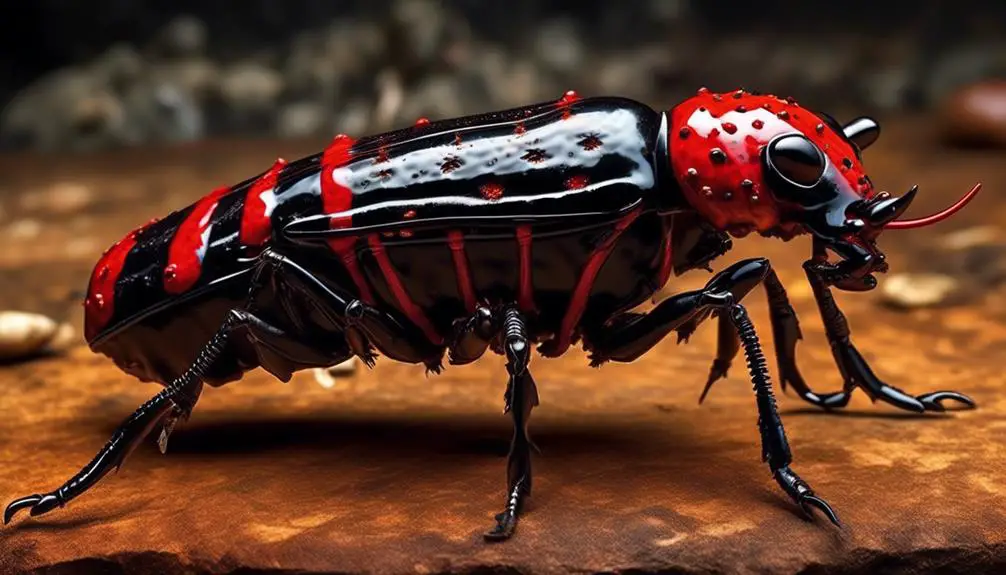
The Cow Killer, also known as the velvet ant, is a distinct species that resembles an ant but is actually a wasp. This solitary insect is found in various habitats across the globe.
The female velvet ant possesses a powerful sting, which is why it’s commonly referred to as the ‘Cow Killer.’ Although they aren’t aggressive, when threatened or disturbed, they release an alarm pheromone that mobilizes the colony for an attack.
The venom of the Cow Killer is delivered through its saliva, and each sting delivers a double dose of this potent venom. Multiple stings from this wasp can cause severe pain and even death in humans. Additionally, the venom is strong enough to kill a cow, hence its common name.
It’s important to exercise caution and avoid handling or provoking these velvet ants to prevent any potential harm.
Assassin Caterpillar
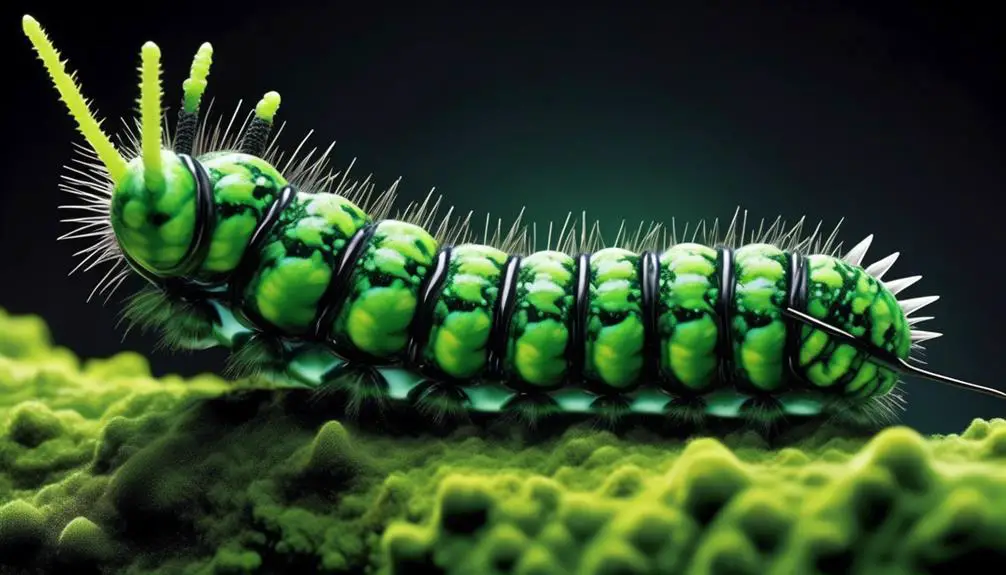
The Assassin Caterpillar, scientifically known as Lonomia Obliqua, is a highly venomous insect found in the Americas. In its larvae form, it’s covered in spines and can be brown, gray, or green in color.
Contact with the caterpillar’s spines can result in severe symptoms, as its venom can cause internal bleeding and organ failure.
However, it’s important to note that the caterpillar eventually undergoes metamorphosis into a harmless silkworm moth.
Venomous Caterpillar Characteristics
Covered in spines and displaying various shades of brown, gray, or green, the larvae form of the assassin caterpillar, scientifically known as Lonomia Obliqua, possesses venom that can cause severe symptoms upon contact.
This venom contains a potent mixture of toxins that can lead to internal bleeding, organ failure, and even death in some cases.
When the spines of the assassin caterpillar come into contact with the skin, they release the venom, which quickly enters the bloodstream.
The venom causes a range of symptoms, including intense pain, swelling, and inflammation.
In severe cases, it can also lead to hemorrhaging, kidney failure, and respiratory distress.
It’s important to exercise caution and avoid any direct contact with this venomous caterpillar to prevent potentially dangerous consequences.
Symptoms of Assassin Caterpillar Sting
When exposed to the venomous spines of the assassin caterpillar, individuals may experience a range of symptoms that can be severe and even life-threatening.
The venom of the assassin caterpillar contains toxins that can cause internal bleeding and organ failure.
Initially, the sting may cause intense pain and localized swelling at the site of contact.
As the venom spreads, individuals may develop symptoms such as nausea, vomiting, and dizziness.
In some cases, the venom can disrupt the blood’s ability to clot, leading to excessive bleeding.
Severe cases may result in kidney failure, liver damage, and even death.
It’s crucial to seek immediate medical attention if stung by an assassin caterpillar to receive appropriate treatment and prevent complications.
Transformation Into Harmless Moth
After undergoing a remarkable metamorphosis, the assassin caterpillar transforms into a harmless silkworm moth. The assassin caterpillar, scientifically known as Lonomia obliqua, is one of the deadliest insects in the Americas during its larval stage. Covered in spines and varying in color from brown to gray or green, this caterpillar is highly venomous. Its venom can cause severe symptoms, including internal bleeding and organ failure.
However, as it undergoes its transformation into a moth, it loses its venomous properties. The harmless silkworm moth, also known as a silk moth, emerges from its cocoon with a new purpose – to reproduce and continue the life cycle.
This transformation from a venomous caterpillar to a harmless moth showcases the incredible adaptability and diversity of nature.
Black Widow Spider
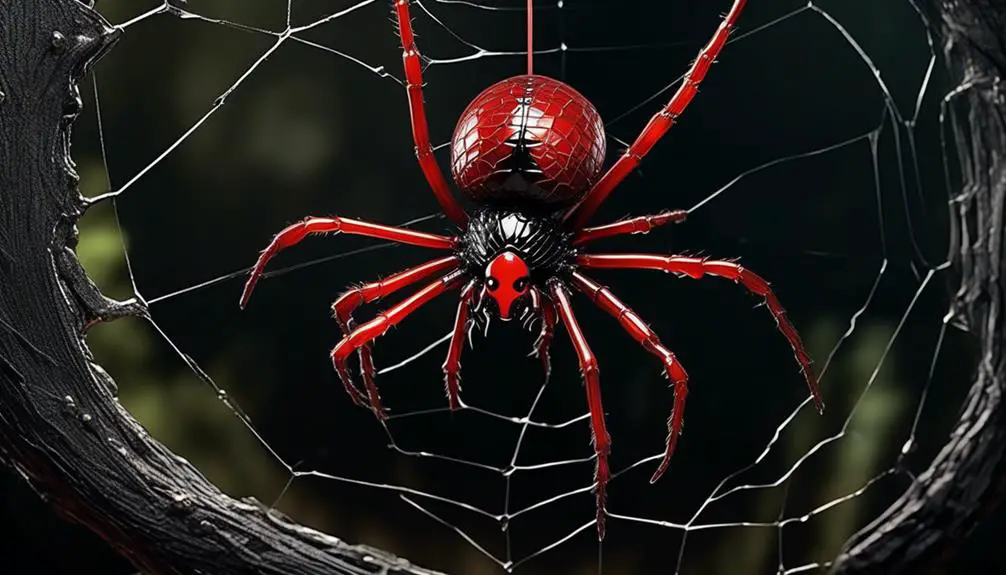
Black widow spiders, known for their distinctive red hourglass shape on the abdomen, are venomous arachnids found in various parts of the world. These spiders belong to the Latrodectus genus and are primarily found in North and South America, Europe, Africa, and Asia. Female black widows are the ones that possess venom, while males are harmless.
The venom of a black widow spider contains neurotoxins that affect the nervous system. When a black widow bites, it injects its venom into the victim’s skin, causing severe pain at the bite site. This pain can radiate throughout the body and may be accompanied by muscle cramps, nausea, and abdominal pain. Other symptoms can include sweating, difficulty breathing, and increased blood pressure.
Although black widow spider bites are rarely fatal, they do require medical attention. The severity of the symptoms can vary depending on factors such as the amount of venom injected and the individual’s sensitivity to the venom. Prompt medical treatment can help alleviate the symptoms and prevent any complications.
It is important to exercise caution when encountering black widow spiders and to seek professional help if bitten. These spiders are typically found in dark, secluded areas such as woodpiles, cluttered garages, and outdoor sheds. Taking preventive measures, such as wearing gloves when working in these areas, can help reduce the risk of being bitten.
The Deathstalker
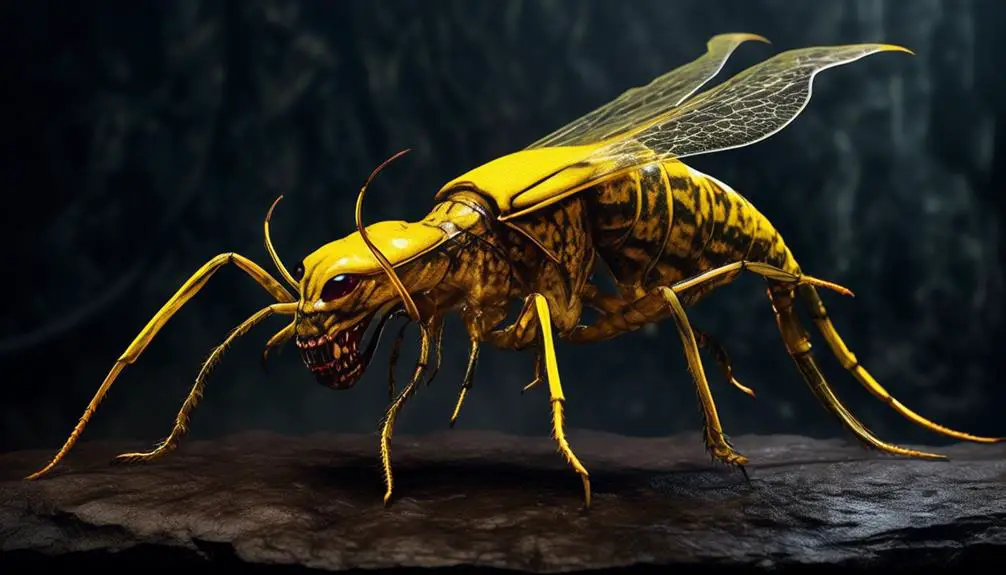
The Deathstalker, scientifically known as Leiurus quinquestriatus, is a highly venomous scorpion found in desert regions throughout North Africa and the Middle East. This species is known for its dangerous venom, which contains a potent cocktail of neurotoxins.
The venom of the Deathstalker affects the nervous system, causing intense pain, muscle spasms, and respiratory distress. It can also lead to paralysis and, in severe cases, even death. The Deathstalker scorpion is particularly dangerous to children and the elderly, as their immune systems may not be able to handle the venom as effectively.
Antivenom is available for treating scorpion stings, but immediate medical attention is crucial in order to prevent serious complications. It’s important to exercise caution when encountering the Deathstalker or any other venomous scorpion, as their stings can have severe consequences.
Understanding the behavior and habitat of these creatures can help minimize the risk of encountering them and getting stung.

Erzsebet Frey (Eli Frey) is an ecologist and online entrepreneur with a Master of Science in Ecology from the University of Belgrade. Originally from Serbia, she has lived in Sri Lanka since 2017. Eli has worked internationally in countries like Oman, Brazil, Germany, and Sri Lanka. In 2018, she expanded into SEO and blogging, completing courses from UC Davis and Edinburgh. Eli has founded multiple websites focused on biology, ecology, environmental science, sustainable and simple living, and outdoor activities. She enjoys creating nature and simple living videos on YouTube and participates in speleology, diving, and hiking.

